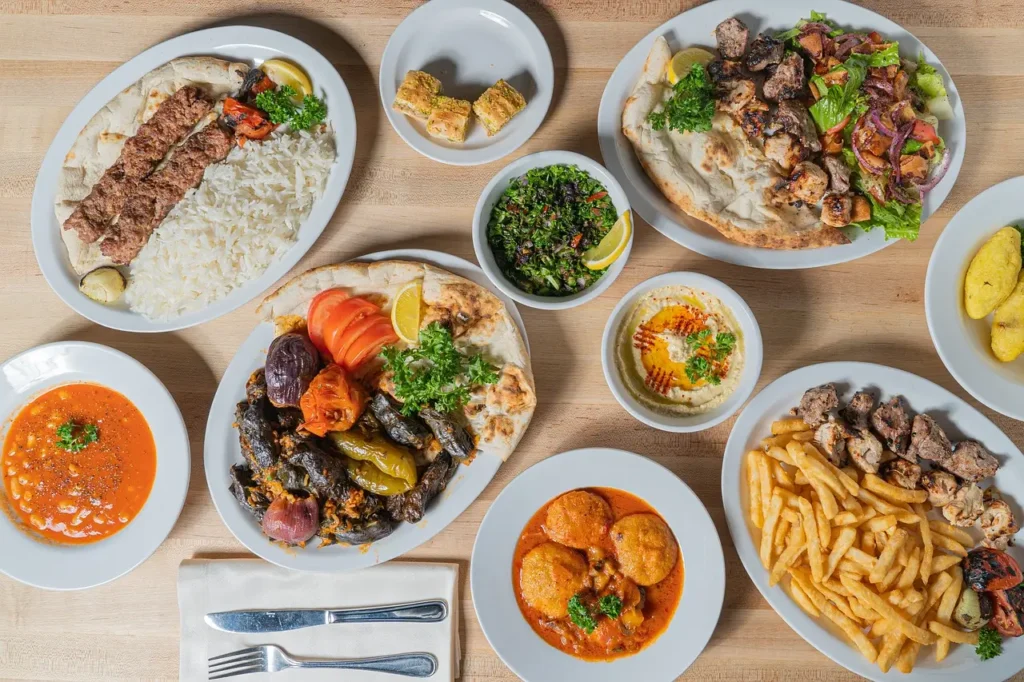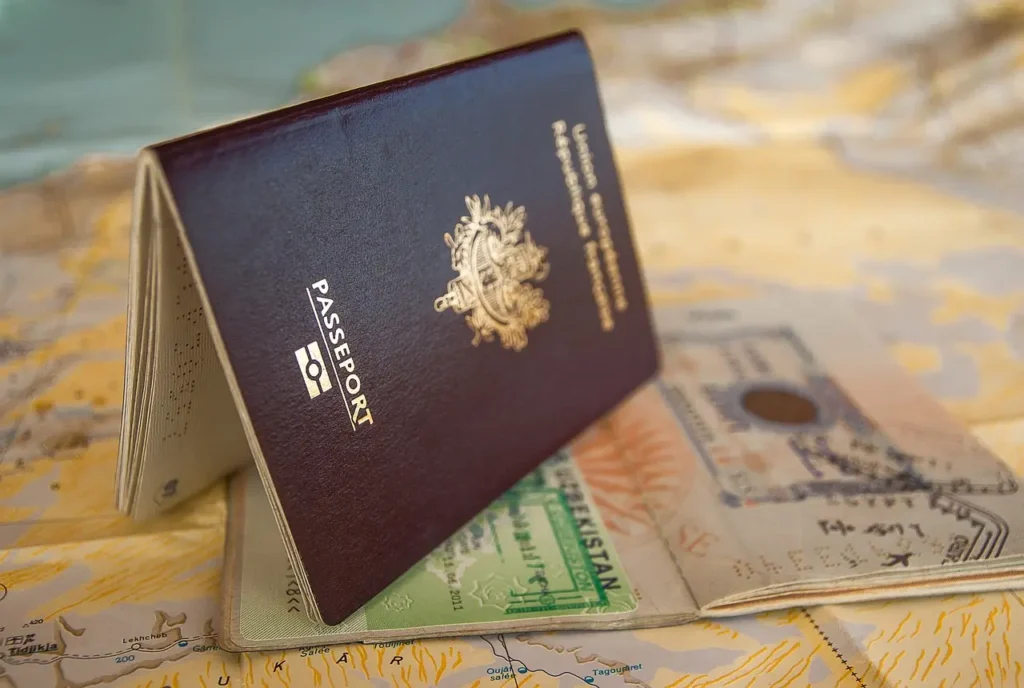Local cuisine is one of the most exciting aspects of living abroad. Imagine diving into a plate of unfamiliar flavors that soon become your new comfort food. This guide is here to help you explore and enjoy the local cuisine like a pro. Ready to turn every meal into an adventure? Let’s dig in and discover the deliciousness waiting for you!
Food is more than just sustenance; it’s a cultural experience, a conversation starter, and a way to connect with your new environment. For international students, diving into local cuisine can be one of the most enriching parts of studying abroad. In this guide, we’ll explore how to make the most of your culinary adventures, from understanding the local food culture to discovering hidden gems that will tantalize your taste buds.
Understanding the Importance of Local Cuisine
Why Local Cuisine Matters
Local cuisine offers a direct line to the heart of a culture. It’s an expression of history, geography, and local traditions. By trying local dishes, you’re not just eating—you’re experiencing a piece of your host country’s identity.
Example: When Ayumi from Japan moved to Italy, she quickly fell in love with the regional specialties of Tuscany. Each meal taught her more about Italian history and the importance of local ingredients.
The Social Aspect of Food
Food is a universal language. Sharing meals can break down barriers and create lasting friendships. Engaging with local cuisine can help you integrate and feel more at home.
Example: Pedro, a student from Brazil, found that his favorite moments in France were spent around the dinner table with his host family, learning about their customs and sharing stories.
Getting Started: Research and Preparation
Researching Local Cuisine Before You Go
Before arriving in your host country, do some research on its culinary landscape. Learn about traditional dishes, local ingredients, and eating habits. This can help you feel more prepared and excited for the food experiences that await.
Example: Emma from the UK spent time reading about Malaysian cuisine before her semester abroad. She made a list of must-try dishes like nasi lemak and laksa, which helped her dive right into the food scene upon arrival.
Food Phrases and Etiquette
Learn basic food-related phrases and dining etiquette. This not only helps in ordering food but also shows respect for the local culture.
Example: Learning how to say “Thank you” and “Delicious” in Thai helped Michael connect better with street food vendors in Bangkok, making his culinary explorations smoother and more enjoyable.
Embracing the Local Food Scene
Street Food: The Heartbeat of Local Cuisine
Street food is often the most authentic and affordable way to taste local flavors. Don’t be afraid to try food from street vendors; they often serve some of the best dishes.
Example: Priya discovered the vibrant street food scene in Vietnam. Her favorite experience was sitting on a tiny plastic stool, enjoying a bowl of pho from a bustling street stall in Hanoi.
Local Markets: A Treasure Trove
Visit local markets to see, smell, and taste fresh produce and regional specialties. Markets are not just for shopping; they are a cultural experience and a place to interact with locals.
Example: Walking through the Mercado de San Miguel in Madrid, Johan was able to sample a variety of Spanish delicacies, from jamón ibérico to freshly made churros.
Dining Out: Exploring Restaurants and Cafes
Explore a variety of dining options, from local eateries to high-end restaurants. Don’t hesitate to ask locals for recommendations—they often know the best spots that aren’t in the guidebooks.
Example: Lucia from Argentina made it a habit to ask her classmates in Seoul for their favorite dining spots. This led her to discover hidden gems that she wouldn’t have found on her own.
Cooking at Home: Bringing Local Flavors to Your Kitchen
Shopping for Ingredients
Familiarize yourself with local supermarkets and specialty stores. Buying fresh, local ingredients can inspire you to try new recipes and recreate local dishes at home.
Example: Jacob, an exchange student in Mexico, loved shopping at the local mercado. He often bought fresh produce and spices, experimenting with traditional recipes like tacos al pastor and mole.
Taking Cooking Classes
Consider taking a cooking class to learn how to prepare local dishes. This can be a fun way to deepen your understanding of the cuisine and meet new people.
Example: Maria took a sushi-making class in Tokyo, which not only improved her cooking skills but also gave her a deeper appreciation for Japanese culinary techniques.
Experimenting with Recipes
Experiment with cooking local dishes yourself. It’s a great way to practice and appreciate the nuances of the cuisine.
Example: Inspired by her experiences in India, Sophie started making her own curry at home, adjusting the spices to match what she had tasted during her travels.
Overcoming Challenges
Dietary Restrictions and Preferences
Navigating dietary restrictions in a new country can be challenging. Research how your needs can be met and learn relevant phrases to communicate them effectively.
Example: As a vegetarian, Alex initially struggled in China but soon discovered that by learning a few key phrases, he could find plenty of delicious plant-based options.
Adjusting to New Flavors
Adapting to new flavors and textures can take time. Be patient with yourself and keep an open mind.
Example: At first, the strong flavors of kimchi were overwhelming for Emily in South Korea. Over time, she grew to love it and even incorporated it into her cooking.
Real-Life Success Stories
Story 1: A Culinary Adventure in Thailand
Anna from Canada embraced Thai cuisine wholeheartedly. From savoring spicy papaya salad to learning how to make pad Thai in a local cooking class, she immersed herself in the flavors of Thailand. Her culinary adventures helped her make friends and feel more connected to her new home.
Story 2: Discovering Italian Cuisine
Carlos from Peru found that Italy’s regional dishes varied widely. By traveling to different parts of the country and trying local specialties, he not only expanded his palate but also gained a deeper understanding of Italian culture and history.
Tips for a Memorable Culinary Journey
Stay Open-Minded
Approach new foods with an open mind. Even if something seems unusual, give it a try—you might discover a new favorite dish.
Example: Initially hesitant, Noah tried escargot in France and found it surprisingly delicious, adding it to his list of memorable food experiences.
Engage with Locals
Talking to locals about their food can provide insights and recommendations that you won’t find in any guidebook.
Example: Mia often struck up conversations with locals in Spain, who introduced her to lesser-known dishes like pisto and calamares en su tinta.
Document Your Journey
Keep a food journal or blog to document your culinary adventures. This can be a fun way to remember your experiences and share them with others.
Example: Alex started a blog about his food experiences in Morocco, sharing recipes and stories that inspired many of his friends to try Moroccan cuisine.
Conclusion
Exploring local cuisine is a rich and rewarding aspect of studying abroad. It offers a unique window into the culture, helps you connect with people, and can lead to unforgettable experiences. By embracing the local food scene, cooking at home, and staying open-minded, you’ll turn every meal into an adventure. So, grab your fork and get ready to dive into the delicious world of local cuisine!
FAQs
What are the benefits of exploring local cuisine as an international student?
Exploring local cuisine helps you understand the culture better, provides opportunities to connect with locals, and enhances your overall experience abroad.
How can I find the best local food spots?
Ask locals for recommendations, explore street food vendors, visit local markets, and use apps like Yelp or TripAdvisor for reviews.
What should I do if I have dietary restrictions?
Research how your dietary needs can be met in your host country, learn relevant phrases in the local language, and communicate clearly with restaurant staff.
Is it safe to eat street food?
Street food is generally safe if you choose vendors with high turnover and good hygiene practices. Look for busy stalls with locals in line.
How can I learn to cook local dishes?
Take cooking classes, watch online tutorials, or ask locals for recipes and tips. Experimenting in your kitchen is also a great way to learn.
What if I don’t like the local food?
It’s normal to encounter dishes you don’t like. Keep trying new things, and you’ll likely find plenty of dishes you enjoy.
How can I make the most of my culinary experiences abroad?
Stay open-minded, engage with locals, and document your experiences. Treat each meal as an opportunity to learn and explore.
Can exploring local cuisine help me make friends?
Yes, sharing meals is a great way to bond with people. Inviting classmates to try local restaurants or cooking together can help build friendships.
How can I manage my food budget while exploring local cuisine?
Mix dining out with cooking at home, visit local markets for fresh and affordable ingredients, and look for student discounts and deals.
What are some must-try foods in popular study abroad destinations?
Research must-try dishes specific to your host country. For example, try tapas in Spain, sushi in Japan, or pasta in Italy.



